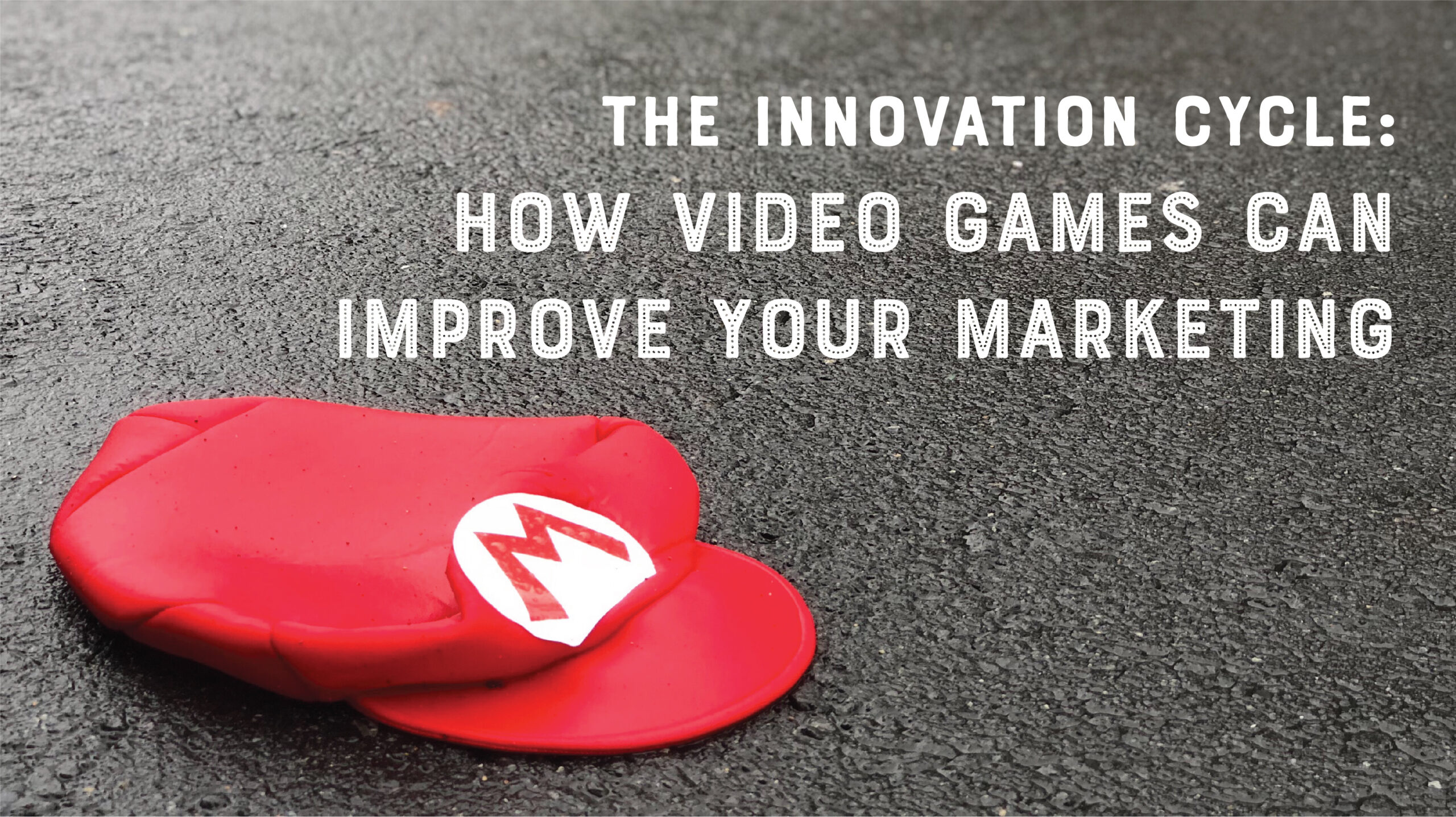When you think about lead generation and running a campaign, it’s a lot like playing a video game. If you have ever played Super Mario Bros (or any of thousands of other games), you know that not everyone clears a level or beats the boss on the first try. Sometimes…okay, maybe most of the time you die. But then, you get back up and keep trying and adjusting your strategy until you achieve the goal. Each time you start a new level over again, you learn it a little better (how to nail that tricky jump, learning the boss’s attack pattern, finding a secret shortcut) and avoid them the next time. You also learn how to finesse your path through the level, collecting as many coins, points, power-ups, etc. as possible.
The same approach should be used for lead generation. You don’t get it right every time, but if you have good goals in place, you just make adjustments each time to get better. This process is the Innovation Cycle.

Much like your childhood math classes, there is an order of operations to the innovation cycle. It all starts with Orchestrating your campaign. This is where all your planning and documentation takes place, and you create procedures to follow. Your messaging and graphics are created, and you launch your plan.
During the Orchestration phase of the Innovation Cycle, it’s also important to conduct a risk assessment. Think of this as a brainstorm of all the “what ifs” that could happen during the campaign — what could go wrong and when it could happen. However, you also need to consider how to prevent these things from happening and how to spot if things are straying from the plan, and when you need to notify the rest of your team. The following table is an example of a risk assessment you can use for inspiration.
| What could go wrong? | When could it go wrong? | How are we measuring if we are on course? | What indicators will trigger looping the rest of the team? |
| Stretching of the overall project timeline | Any point after the initial kickoff and throughout the campaign | Tracking deadlines that are set for each week Realistic expectations on deliverables | Missed deadlines Deliverables being late Project progression |
| Changes in the scope of the project or specific areas | Any point after the initial kickoff, or as we work on developing specific areas | Tracking deliverables and budget Weekly reporting | Progression of the original budget Original list of proposed deliverables |
| Errors in record keeping | As we are identifying resources or at campaign launch | Reviewing and testing throughout the process | Any areas where misinformation is detected throughout |
The next step is Quantification. This is where you measure the effectiveness of your campaign and inspect the results. Did you gain more followers? Did your website traffic increase? Are your sales numbers increasing? If so, you know you’re on the right path. If not, then it’s time to make adjustments.
In the Innovation phase of the cycle, you’re looking for ways to improve and adjust your efforts so you’ll see the results you want with your campaign. Innovation is important because if you keep doing things the way you’ve always done them, you likely won’t see remarkable changes. What do you need to pivot in order to reach the desired goal and how will you implement this change? What can you do better? Consider any improvements you can think of, and then choose those you want to try and make sure you are able to measure the effectiveness of any new efforts before you make the changes so you can see what does and doesn’t work once it’s in place.
From there, give it some time before you rush into new adjustments. While you’ll probably spot room for improvements right away, you shouldn’t make adjustments as they occur to you. Take the time to observe new adjustments before you jump into more. Innovation isn’t a once and done deal—it’s a continuous cycle that will always need to be reviewed and adjusted in order to reach the intended outcome.
You are in charge of your destiny, so be proactive! The Innovation Cycle can help you become more intentional with your campaigns so you’re more likely to see the results you want.
Planning a social media campaign? Check out the last blog in this series, Our Favorite Resources for Keeping Up With Social Media Technology, to learn where we go for the latest news and updates in this ever-changing world.


